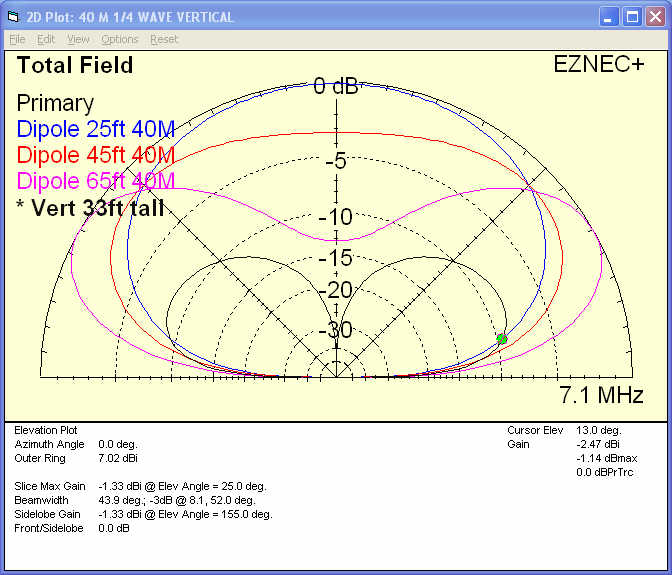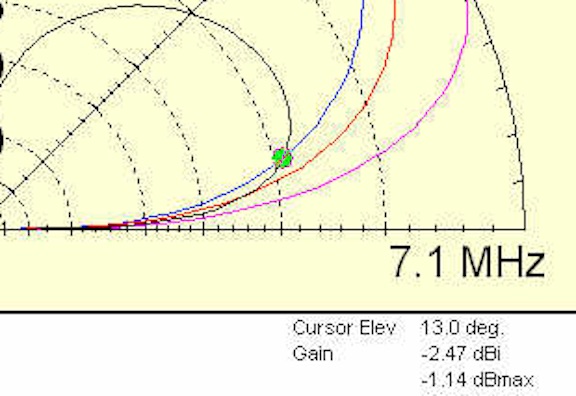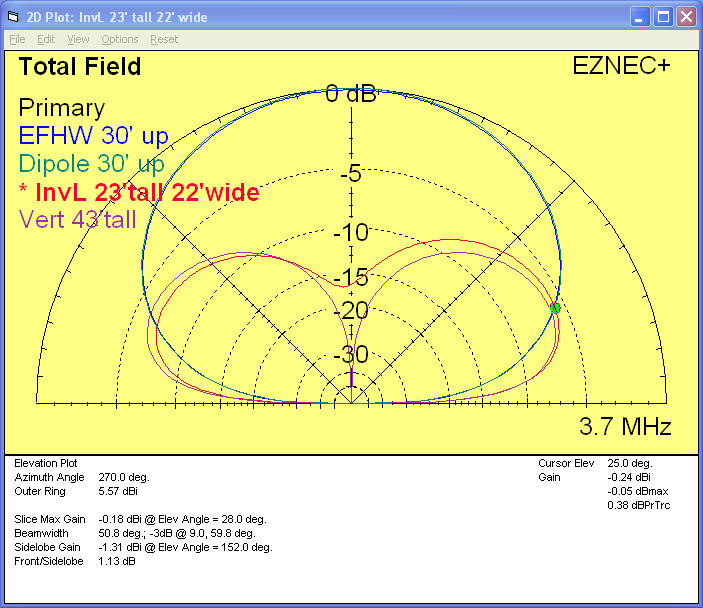Ever wonder why successful DX-seeking stations so often use vertically polarized Verticals or Inverted-Ls on those lower bands? And why horizontal dipole-type antennas are most often seen for use on the higher shortwave bands? Even loop designs, intended for DX chasing on these lower bands, most often employ vertical polarization.
There’s good solid technical reason for this old adage:
“If you can’t get a horizontal antenna up around 3/8 wavelength or higher, then use a vertically polarized antenna.“
From the physics standpoint, reflected waves (in this case reflected by ground) have different boundary conditions, different solutions, and different behavior – giving vertical polarization the advantage over horizontal polarization when the horizontal antenna is low to the ground.
Vertically polarized antennas launch low-angle radiation (where DX signals tend to come from) more effectively than low mounted horizontal antennas.
There are many factors that influence the exact answer, but we can still use a simple EZNec model to draw handy conclusions from the simple case of a 40 M horizontal dipole antenna vs. a 40 M vertical antenna ===>
- At a low horizontal antenna height of 25 ft (the blue trace), the Vertical is quite a bit better than the Dipole below about 13 degrees elevation.
- At about 3/8 wavelength high (the red trace), the Vertical’s and the Dipole’s response are very nearly the same for low elevation angles.
- At greater heights (the magenta trace), the Vertical’s advantage starts to disappear, and the Dipole is nearly always superior at low elevation angles.
In the zoom shown above, we can see that for this case of a 40 M horizontal Dipole up at 25 ft, the Vertical antenna’s advantage over the Dipole is several dB below 13 degrees elevation, where quite a bit of low angle DX communication occurs.
On 80 M, and with a horizontal antenna at a typical height of 30 ft, the difference in gain at low radiation angles 22 degrees and lower is even more pronounced. Below we compare the elevation plots for the typical 130 ft long EFHW or Dipole against a simple 43 ft tall Vertical or a 23 ft tall x 22 ft wide Inverted-L ===>
Dave Benzel – KD6RF – 2015 Nov 26
10,544 total views, 2 views today



Thanks for an easy to understand explanation on the affect of height vs frequency. Looks like a lot of my RF is dedicated to warming the clouds !
But if NVIS is your goal, a cloudwarmer is what you want. Not so for DX!
Can you run the same model software for 20m dipole and inverted L vs a vertical antenna Assume 16 ft and 24 feet (fishing rod and painters 3 pc extension pole) for max elevation for the center of the 20m dipole. Assume 1/4 wave and a coil hat 22″ above the mount on the vertical and the vertical starts feet above ground level, and 120″ of whip antenna above the 40-30 20m capable coil. A modified Buddystick, so to speak.
loading coil, and base of mount is 6 feet above ground level on a tripod with a single horizontal radial, also held 6 feet above the ground and tuned for 20m at about 16.5 feet long on a SWR meter.